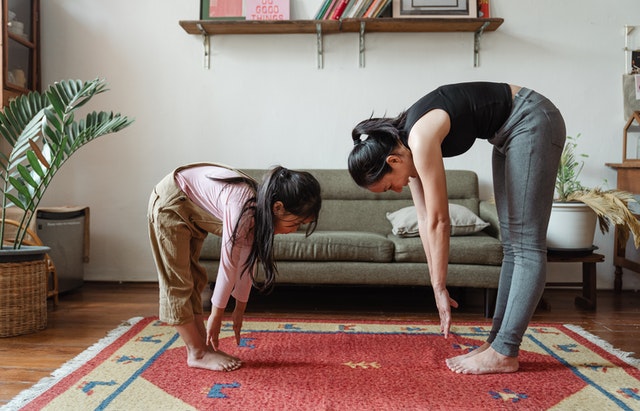
When most people think of fitness, they usually think of speed and strength. They may consider adding specific exercises such as isometrics or outdoor weight training to a new fitness plan. However, many of us tend to overlook flexibility when it comes to fitness. Here’s why flexibility is one of the most important parts of any fitness plan and how you can add it into your workout.
The Importance of Flexibility
According to experts at Harvard Medical School, flexibility can help us avoid injuries and prevent pain. It can also increase range of motion, leading to such sports-related improvements as a better golf swing or a more effective tennis serve. Increased range of motion can also improve our ability to bend and reach, actions used not only in many fitness regimens but also in everyday life. Another benefit of flexibility for everyday life is its ability to improve our balance, which helps keep us from falling.
In addition, one researcher at Pennsylvania State University’s Center for Fitness and Wellness found that flexibility can contribute to cardiovascular health by lowering blood pressure. Given the benefits of flexibility, it makes sense to add it to our fitness routines.
When to Focus on Flexibility
At what point in our workouts should we focus on flexibility? While we may predominantly focus on flexibility moves at the start of an exercise session, many experts believe this is an outdated way of thinking. Instead, focusing on flexibility after a warm-up or even at the end of a workout is more effective because the muscles are pliable and more receptive to stretching.
Which Flexibility Exercises to Try
There are a wide variety of effective flexibility exercises. Some require special equipment while others do not. Depending on your budget and space, you can decide which exercises best fit into your workout routine.
Flexibility Exercises Requiring Equipment
Rollers are possibly the most popular equipment for flexibility exercises. According to a study published in the International Journal of Sports Physical Therapy, foam rollers or roller massagers can improve range of motion and muscle performance. This study reviewed previous studies in which people applied pressure with their body weight to targeted muscles when lying on the rollers and others used hand-held roller massagers on targeted muscles. The review study found all users experienced benefits.
Foam rollers come in all shapes and sizes. Some are thin and smooth, while others are fat and textured. Experimenting can help you find the one that works best for the muscles you want to target. The same is true of roller massagers. Some people find long, stick-shaped rollers work the best, while others prefer a ball. Other people like to tape a couple of tennis balls together for maximum effect.
Flexibility Exercises Needing No Equipment
There are also a number of effective stretching exercises that don’t require equipment. For inspiration, think of an old-fashioned gym class featuring toe touches and splits. One good stretch for your quadriceps involves bending your leg behind you and reaching back to grasp the foot, pulling the foot toward your body. If this isn’t a deep enough stretch, you can lift the foot higher to increase the pull.
For a hamstring stretch, try placing your foot on a low step in front of you. With your heel on the step and your toes pointing up, extend your knee. If you need a deeper stretch, try using a higher step or bending at the waist as you reach for your foot. You can stretch your calf muscles on the stairs as well. With one foot slightly in front of the other, place the toes of the front foot against the riser of the lowest step. For a deeper stretch, lean forward toward your front foot. Repeat these exercises on both legs.
Stretching your arms is also important. To stretch your dorsal muscles, reach across the front of your body with one arm. Keeping your arm straight, place the elbow of your straight arm in the crook of your other elbow and hug your straight arm to you. Repeat with each arm.
You can stretch your triceps by raising one arm overhead, then bending it at the elbow to touch the top of your shoulder. Reach with your other arm over your head and grasp the
arm at the bent elbow. Then, pull the bent elbow behind your head. The more pressure you use, the deeper the stretch will be. As with all other stretching exercises, be sure to repeat on both sides.
